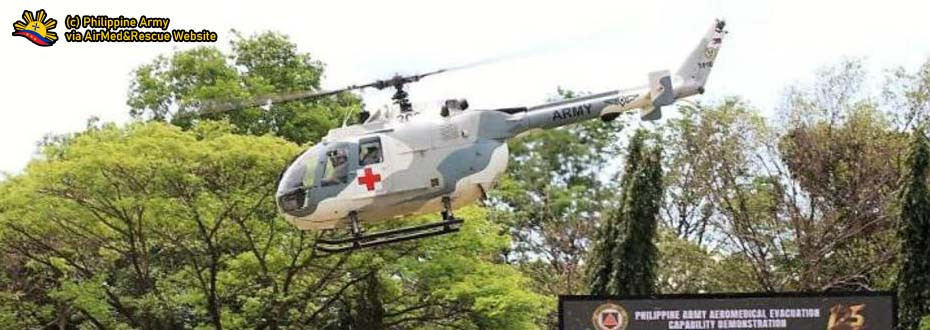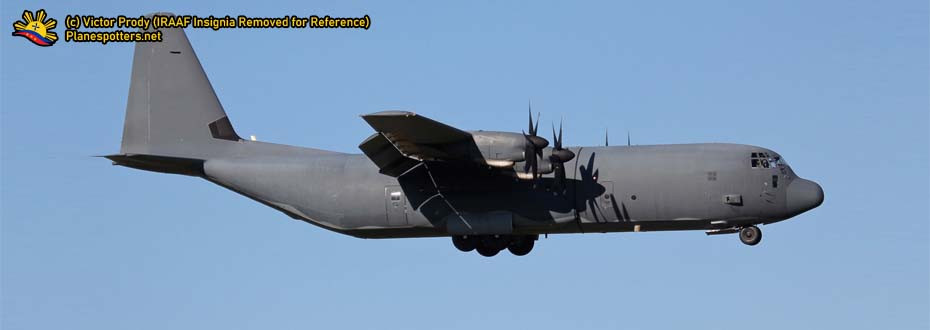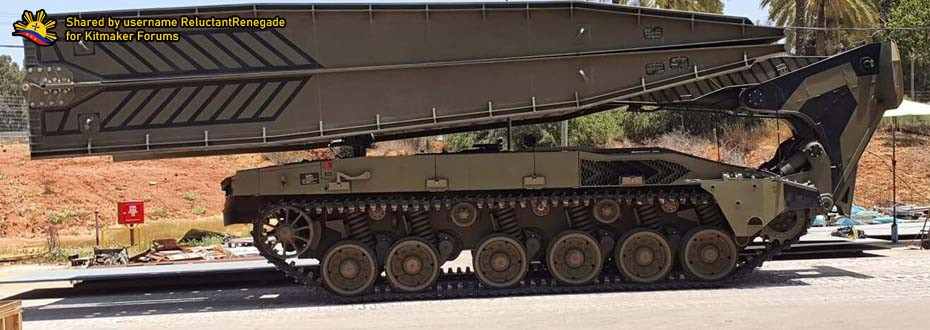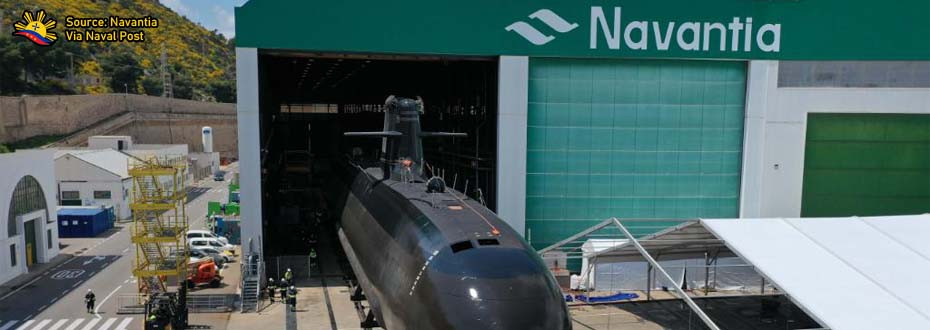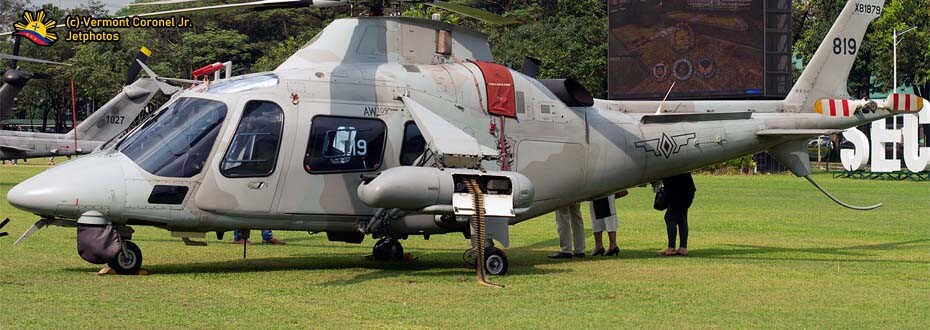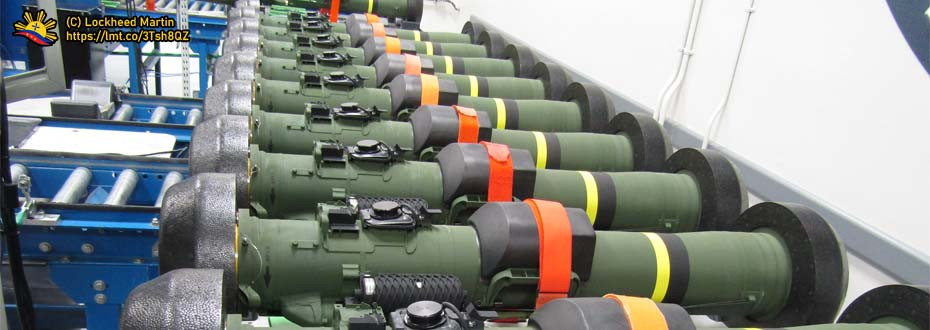This development comes with new, fresh offers getting on its way as prospective suppliers increase the chance of getting into the Philippine defense market by providing enticing offers at hand for which the military high ranks get to assess and consider its option as a preferred platform within the newly-formed regiment.
ON THE HEADLINES
 |
| This helicopter may soon comprise the Philippine Army Aviation Regiment shall this be considered. Obtained via Wikimedia Commons. |
It was noted that discussions surrounding the Land-based Missle System pertain more to the pending consideration of having Brahmos Cruise Missles from India's Brahmos Aerospace that the Philippine Army currently eyes upon and the Multiple-Launched Rocket System coming in the form of K-136 Kooryong MLRS which was originated from South Korea.
Speaking of the Philippine Army's new Aviation Regiment, it comes with enthusiasm in a manner that Boeing offers its AH-6i Light Attack Helicopters which may help form the organization's close air support capabilities which in itself makes the service branch less dependent on the Philippine Air Force in terms of getting its mission done that requires such platform to deliver munitions on their intended target.
The offer gives a nice headstart for the Philippine Army's formation of its new regiment as it seeks more military hardware for them to function as intended within the military organization as they are specialized as the aviation arm of the service branch, the same way as those of the Philippine Navy's Naval Strike Wing where assigned personnel will man respective aircraft that will come at hand along the way.
Both the Aviation Regiment of the Philippine Army and Boeing's offer of AH-6i Light Attack Helicopters are the main topics of this article's discussion as the details regarding the organization of this military branch as well as those of the weaponry offered will be covered in detail.
This comes as a good thing that shows an interesting development among the service branches of the Armed Forces of the Philippines as the Revised AFP Modernization Program through the Republic Act 10349 motivates these changes as part of the process that involves getting the DOTMLPF - Doctrine, Organization, Training, Materiel, Leadership, Personnel and Facilities, in practice.
Hence, let us now tackle more into the details regarding the formation of the aviation regiment along with the deal which helps understand the rationale of having more capable close air support capabilities within the Philippine Army along with its other aviation-related developments.
THE ARMY AVIATION REGIMENT
 |
| The organization was once known as the Philippine Army Aviation Battalion. Image Source. |
As the Facebook page Pinoy Aviators describes the insignia above, The word BAGWIS is the Filipino term for the English word "WINGS" which represents the Army Aviation Battalion's capability to perform its given mission in the air to support the ground troops and takes pride in being the sole flying component of the Philippine Army. The 'BAGWIS' or 'wings' has been an integral symbol in the unit seals of the Philippine Army Air Corps, the Army Aviation Battalion, and the Aeroscout Company (Update: The Philippine Army Aviation Regiment now sports a new insignia and it can be checked on their Facebook profile here).
It will also be a given thing that the attributes of the 'BAGWIS' symbol may also influence the newly-formed Philippine Army Aviation Regiment as the aviation units of the Philippine Army may go reorganized to give way to this new unit within the organization that aims to have more military assets procured along the way wherein the platforms that this Aviation Regiment aspires to have ranged from Combat Utility Helicopters such as a Medevac HH-60 Blackhawk Helicopter down to light attack helicopters like this topic on AH-6i offer of Boeing.
In the planning of the Philippine Army in terms of improving its aviation capabilities, it is worth welcoming on their part as this connotes to not only about their self-reliance on the capabilities of the Philippine Air Force in terms of logistics capability involving helicopter platforms but also a nice way for the latter to have its priorities set on other procurement programs such as fixed-wing cargo aircraft and Multirole Fighter Jet aircraft as part of the nation's set to external or territorial defense.
So, there will be interesting things to come regarding the development and transformation that currently takes place in the Philippine Army Aviation Regiment along with the ones that cover the Revised Modernization Program of the Armed Forces of the Philippines as these initiatives are intended to equip the country into its minimum credible defense posture, although delays may happen on the time of this posting due to the ongoing health crisis.
AH-6i AND ITS DEVELOPMENT
 |
| The AH-6i design obtains inspiration from its McDonnell Douglas predecessor - the MD 500 series. (Image - PAF's MG-520 Light Reconnaissance/Attack Helicopter) Image Source. |
It is worth to mention that while the production of AH-6i Light Attack Helicopters is currently made by Boeing on its division that also involves the production of the AH-64E Apache Guardian which in itself is being offered to the Philippine Air Force, the production of the main MD-500 series particularly the civilian ones on the present date goes to the MD Helicopter Holdings Inc., which was a split from Boeing's helicopter division that produces both the aforementioned military helicopters.
While two companies built a helicopter with the design cues match originally as a result of a split, it is worth considering that its continuous production means a lot for the Philippine Air Force for its current MG-520 Light Reconnaissance/Attack Helicopter on its inventory, with a better perspective on the idea at hand that involves a transfer of such aircraft to the Philippine Army Aviation Regiment, paving the way for the former to increase its dedicated platforms at hand through the Attack Helicopter Acquisition Project and its future prospects.
The development of the AH-6i Light Attack Helicopter started during the test made by Boeing on an Unmanned Little Bird demonstrator way back in 2004, with more tests being made two years later in the year 2006. The abilities possessed by the Unmanned Little Bird Demonstrator provided a significant step that will develop this sophisticated light attack helicopter that Boeing singlehandedly developed and now aspires to pitch its prospective sale for the Philippine Army's newly-formed Aviation Regiment which currently seeks air assets for its operations.
Although the AH-6 development is recent with sophisticated systems fitted on a known MD-500 series helicopter fuselage, the development of the design that defines its current shape is traced from a couple of decades ago wherein it originates to the 1960s helicopter design incorporated to the OH-6 Cayuse or also known as the Hughes 500 light attack and observation/reconnaissance helicopter.
With the age of its design development like those of the AH-1 Cobra and its UH-1 Huey cousin, the OH-6 Cayuse/Hughes 500 has come with multiple variants (which will be discussed along the way) and is still in production on both civilian and military variants today and currently in service with many users such as the Philippine Air Force's imaged MG-520 helicopter.
From the logistics standpoint, the number of variants and users provided from the first OH-6 Cayuse in service gives an idea about the large source of spare parts to be obtained as this means getting the needed assurance that these helicopters may continuously operational with lesser problems involving the maintenance and the outsourcing of components that are needed in keeping these platforms in good shape.
SPECIFICATIONS
 |
| Take note that this detail pertains to the AH-6 family as a whole and not just the AH-6i which is the recent iteration of this type of light attack helicopter. Image Source. |
The answer goes to the mere fact that the details provided covers much of the AH-6 family of a light attack helicopter in which the first variants of this family entered service on the year specified above, indicating an idea that this platform was already in production before Boeing bought McDonnell Douglas and divide the production of the AH-6/MD-500 series helicopters with MD Helicopters getting the civilian portion.
Moreover, the 1980s introduction is just part of the improvements that are incorporated into the original OH-6 Cayuse/Hughes 500 light attack/reconnaissance helicopter which also have it redesignated as the AH-6 that is known currently, with the recent AH-6i variant being the one that is getting offered to the Philippine Army.
Being a light attack helicopter, it comes with four main guns, three missiles, and a type of rocket to choose from varying on the operational requirements needed to achieve a certain military objective or the preference on the nature of a mission, giving them multiple options on which weapons loadout will be provided as to attain the overall effectiveness of the light attack helicopter platform in combat.
Compared to dedicated attack helicopters such as the AH-1 Cobra or the AH-64 Apache, it has a lesser service ceiling of 5,700 meters although it goes comparable to the other areas such as its speed, range, and endurance while having a lighter capacity of 680kg for weapons loadout which is a usual thing for a light attack helicopter that helps augmented the aforementioned dedicated platforms for close air support operations.
Its airframe dimensions and design is a proven one as it was derived from the 1960s-era OH-6 Cayuse which was serviced along with the UH-1 Huey and AH-1 Cobra during the Vietnam War as its function at that time go for more reconnaissance operations as differed to the Combat Utility/Personnel Transport function of the UH-1 and the close air support capability of its AH-1 derivative.
The current AH-6i (export) variant of the AH-6 family of light attack helicopters came with the latest technologies available especially with its avionics wherein it renders cockpit compatibility with night vision goggles, of which the Air Recognition website details it as the one with "integrated two multifunction displays, an up-front display, a 3-in-1 flight information display, vertical information display and pilot and co-pilot intercom control station (ICS) panels" as well as it came with an L-3 Wescam MX-15Di EO/IR targeting sensor system which helps improve firepower accuracy.
SUMMARY
 |
| Graphic detail of the AH-6i's weapons loadout and sensor systems that define its capabilities as a light attack helicopter. Image Source. |
It is here that Boeing aspires to capture the portion of the country's defense market alongside its AH-64 Apache offer and AGM-84 Harpoon missiles which are part of the deal involving the Multirole Fighter Jet program, especially if the Lockheed Martin's F-16 Block 70/72 Viper was chosen for this Philippine Air Force project.
This AH-6i offer of Boeing to the Philippine Army's Aviation Regiment may go advantageous especially with the Philippine Air Force also having their MD-520MG light attack/reconnaissance helicopters in their current fleet as both of these platforms share design cues that were originated from the OH-6 Cayuse that was utilized by the United States Army in the Vietnam War.
Logistically-wise, this weaponry option may be seen as an ideal thing for the Philippine Army as it helps improve their aviation regiment along the way with lesser expenses on its maintenance and repairs are seen as an attribute for this unit to further maximize their operations as well as the developments along with it without getting more burden on the Army's budget for repair and maintenance for this military assets.
Such development on having more assets for this newly-formed unit may improve further the capabilities needed by this military branch of the Armed Forces of the Philippines in getting its missions done wherein the enhancement of their own close air support capabilities may provide additional firepower needed by the ground forces as they keep on to their objective of getting this nation safe which is part of their duties and responsibilities as an organization.








